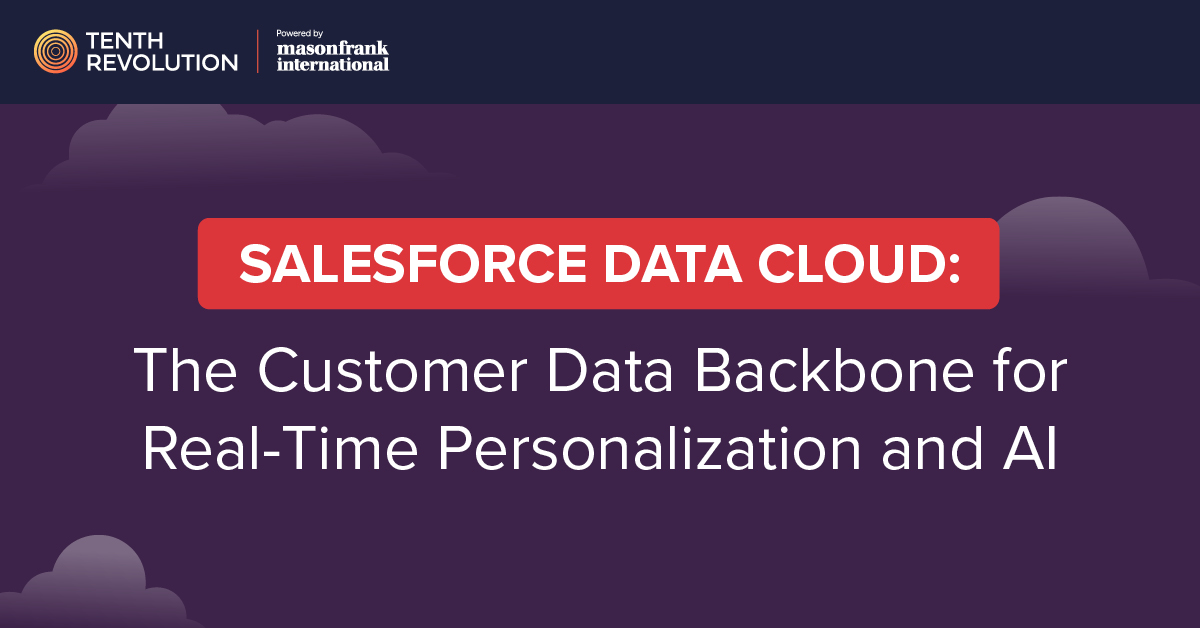
Enterprises are under pressure to unify fragmented data, deliver hyper-personalized customer experiences, and deploy AI responsibly.
But for many organizations, these ambitions collide with reality: sprawling data warehouses, duplicated pipelines, and delayed insights. The old extract, transform, and load (ETL) approach no longer scales in a world that runs on real-time interactions.
Enter Salesforce Data Cloud, now rapidly becoming the customer data foundation of the enterprise. By enabling zero- or low-ETL access to warehouse and lakehouse data in platforms like Snowflake and Databricks, Data Cloud is reshaping how companies activate insights for personalization, analytics, and AI grounding.
Moving Beyond Heavy ETL
Traditional ETL processes involve copying and reshaping data before it can be used in Salesforce applications. This creates several challenges:
- Latency: Data often lags hours or days behind customer activity.
- Redundancy: Multiple copies of the same data increase storage costs and compliance risks.
- Complexity: Heavy engineering resources are needed to maintain pipelines and keep them secure.
For enterprises, this means personalization happens too slowly, analytics are incomplete, and AI models lack the trusted context to generate reliable outputs.
👉 Need help connecting Salesforce Data Cloud with Snowflake or Databricks? Mason Frank can provide Data Cloud architects and developers to unlock zero-copy activation.
Zero-Copy Access: A New Data Paradigm
Salesforce Data Cloud addresses these issues with zero-copy and low-ETL architecture, built through partnerships with data leaders like Snowflake and Databricks. Instead of moving data into Salesforce, Data Cloud queries it directly where it resides.
Key advantages include:
- Real-Time Personalization: Customer interactions update profiles instantly, enabling dynamic marketing, service, and commerce experiences.
- Lower Compliance Risk: Sensitive data remains governed under its original security and residency model.
- Cost Savings: Eliminates redundant storage and complex ETL pipelines.
- Unified Analytics: Business users gain a 360-degree view of the customer without data silos or duplication.
This architecture transforms Salesforce into the connective tissue between operational systems, analytical platforms, and customer-facing teams.
Real-World Use Cases
Businesses across industries are already leveraging Salesforce Data Cloud as their customer data backbone:
- Retail & Consumer Goods: Activating purchase history from Snowflake in real time to deliver personalized offers online and in-store.
- Financial Services: Grounding AI copilots in governed Databricks datasets to ensure regulatory-compliant recommendations for wealth management.
- Healthcare & Life Sciences: Powering patient journeys by unifying EHR, claims, and engagement data into consent-aware profiles.
- B2B Enterprises: Equipping sales teams with live usage and contract data to improve cross-sell and renewal conversations.
Each scenario demonstrates how zero/low-ETL access makes personalization and AI both faster and safer.
👉 Want insights on hiring Salesforce professionals with data and AI expertise? Check out Mason Frank’s Salesforce Careers & Hiring Guide for the latest skills trends and salary benchmarks.
The AI Connection: Grounding Models in Trusted Data
Generative AI is only as strong as the data it’s grounded in. With Data Cloud, Salesforce copilots like Einstein Copilot and Agentforce gain access to real-time, consented customer data without depending on stale or duplicated datasets.
- Grounded Responses: AI outputs are contextual and accurate, reflecting live customer interactions.
- Consent-First AI: Privacy preferences embedded in Data Cloud ensure that generative models respect compliance boundaries.
- Cross-Platform Intelligence: AI agents combine Salesforce and external data for richer, multi-dimensional insights.
This elevates AI from experimental to enterprise-ready—an essential shift for leaders seeking measurable business outcomes.
Why Business Leaders Should Care
Adopting Salesforce Data Cloud as the customer data backbone creates strategic advantages:
- Customer Trust – Real-time, consent-aware personalization builds stronger relationships.
- Faster Time-to-Insight – Zero-copy access accelerates analytics and decision-making.
- Scalability – Data Cloud seamlessly extends across functions, from marketing to service to commerce.
- AI Readiness – Grounding copilots and autonomous agents in trusted data ensures compliance and reliability.
The result is a future-proof foundation where personalization, analytics, and AI all operate from the same source of truth.
Building the Backbone: A Roadmap for Adoption
For leaders ready to embrace Data Cloud as their enterprise data layer:
- Audit current pipelines to uncover duplication and latency issues.
- Prioritize high-impact use cases like real-time offers or AI-powered recommendations.
- Integrate with Snowflake or Databricks to enable zero-copy data activation.
- Establish governance to embed consent and compliance into every workflow.
- Upskill teams by hiring Salesforce professionals with expertise in Data Cloud and data integration.
By starting small and scaling deliberately, businesses can unlock the full value of zero-ETL data activation across the enterprise.
Salesforce Data Cloud is no longer just another feature. It’s becoming the enterprise customer data backbone, powering personalization, analytics, and AI with speed, compliance, and trust. Companies that embrace this architecture will lead the way in delivering intelligent, real-time customer experiences.


